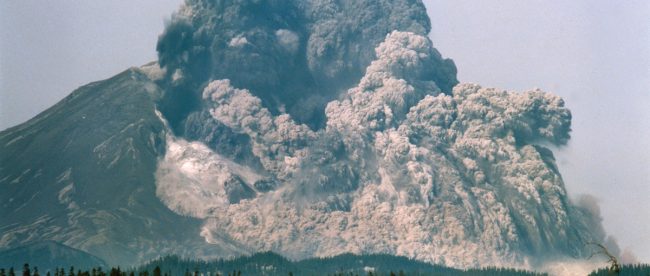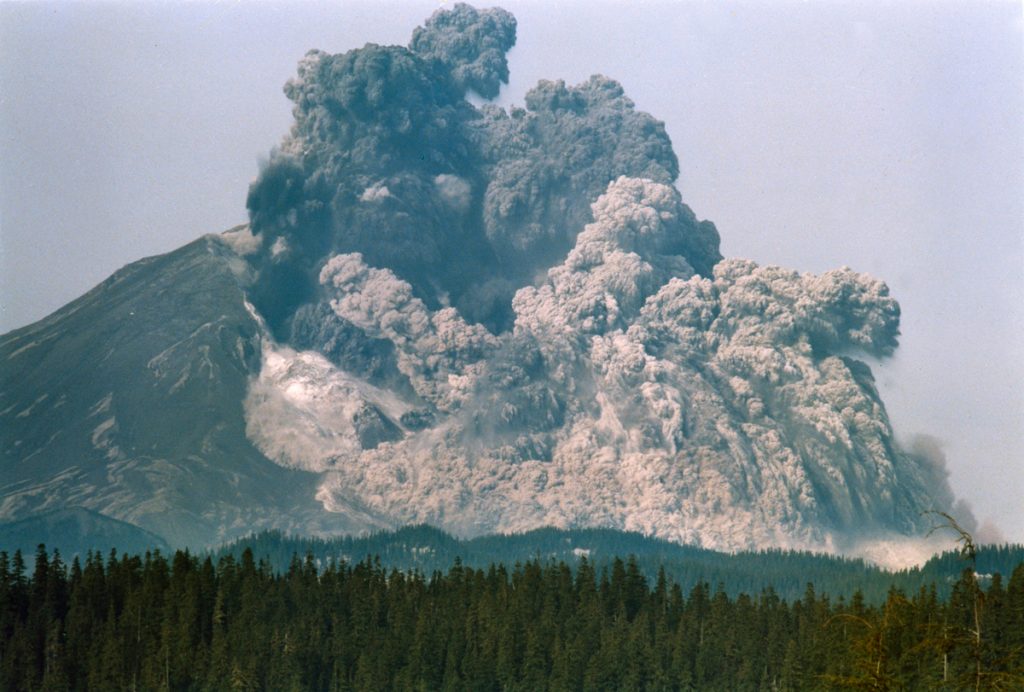The Man Who Covered Up An Eruption


On March 27, 1980, Skamania County, Washington, was rocked, literally. Mount St. Helens, a volcano in the Cascades mountain range, blew its top, also literally — it erupted. At that point, the explosion was rather minor. Called a “phreatic eruption,” it mostly featured a lot of steam and some rock bits, but probably had little to no actual lava. It still wasn’t a place most of us would want to go on spring break, but if you’re a volcano aficionado, the region was an enticing draw. After all, it’s not every day that one gets to see an actual volcanic eruption first-hand.
For Robert Landsburg, the event was a calling. Landsburg was a photographer by trade and passion, and a local one at that — he lived and grew up in the area. On a regular basis, he’d make the roughly 90-minute drive from Portland, Oregon, to take pictures and video of the natural wonder in progress. He was there a dozen times or so, including on May 18, 1980, ready to take more photographs.
Landsburg, though, would never see those pictures. On that morning, the relatively tiny eruptions turned into a major one, as seen above from a distance. Landsburgh got a close-up view — one he saved for the rest of us to see.
At a bit after 8:30 in the morning, a 5.1 magnitude earthquake about a mile underneath the volcano triggered an eruption unseen in North America for about a century. Mount St. Helens blasted rock, ash, and steam over 80,000 ft (24,400 m) in the air, depositing ash into 13 American states and Canadian provinces. The north face of the mountain collapsed, causing a landslide larger than any other the world has ever seen.
As National Geographic reported, Landsburg “already has his camera on a tripod, aimed and cocked.” When the ash plume shot up, he began taking photos and video. And by the time he realized that the eruption was going to be as big as it was, it was probably too late for him to escape safely. Nat Geo continued: “As the all-engulfing cloud of ash climbed the sky toward him, four miles from the summit, he desperately cranked across his lense.” He rewound the film and stuffed it in his bag. And then, in what probably was an effort to protect the unique images he captured, Landsburg laid on top of his belongings as the eruption took his life.
Landsburg’s body was discovered seventeen days later. The film he hoped to protect was mostly intact and able to be developed. While the photos aren’t high quality (especially by today’s standards), and the heat and shrapnel likely damaged it, they still provide a unique and valuable glimpse into the center of an eruption zone. For historians and scientists alike, Landsburg’s realization that he’d not be coming back, and his decision to use his last moments to protect his work, has paid dividends. And for us as well. In January 1981, Nat Geo published Landsburg’s photos, which you can see at the link above.
Bonus fact: Hawaii has a handful of volcanos (and they’re generally safe for visitors to come experience). And if you want to spend all of eternity there, Hawaii has a solution: you can scatter your ashes at some of these national parks. Here’s one example, and if you’re interested, the form you have to fill out first is available as a pdf, here.
From the Archives: Dormant and Tired: A volcano which shouldn’t erupt does, kind of.
